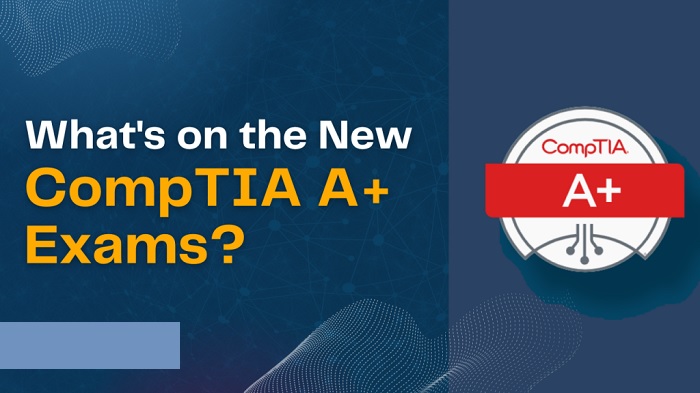The CompTIA A+ certification is a highly recognized credential in the IT industry, serving as a benchmark for entry-level IT professionals. It validates the foundational knowledge and skills required to excel in various IT roles, such as technical support specialist, help desk technician, and field service technician. The CompTIA A+ exam consists of two parts: 1101 and 1102. In this article, we will delve into the details of each exam section and explore the topics and concepts that candidates can expect to encounter.
Part 1: CompTIA A+ (1101) Exam
The CompTIA A+ (1101) exam focuses on essential IT skills and knowledge related to hardware, networking, mobile devices, and troubleshooting. It assesses a candidate’s ability to install, configure, and maintain various hardware components and peripherals.
- Hardware
The hardware section covers the fundamentals of computer components, including CPUs, RAM, storage devices, motherboards, and power supplies. Candidates will be tested on their understanding of different form factors, interfaces, and the compatibility of hardware components. Topics such as expansion cards, display devices, and input/output devices are also included.
- Networking
Networking is a crucial aspect of IT support. This section covers the basics of networking technologies, protocols, and network troubleshooting. Candidates should be familiar with concepts such as IP addressing, subnetting, network devices (routers, switches), wireless networks, and troubleshooting common network issues.
- Mobile Devices
As mobile devices become increasingly prevalent, IT professionals must possess knowledge and skills related to smartphones, tablets, and other mobile devices. This section focuses on mobile operating systems, device connectivity, mobile email configuration, and security considerations for mobile devices.
- Hardware and Network Troubleshooting
Troubleshooting is a key skill for IT professionals. This section evaluates a candidate’s ability to identify and resolve hardware and network-related issues. Topics covered include troubleshooting common hardware problems, resolving network connectivity issues, and using appropriate troubleshooting tools and techniques.
Part 2: CompTIA A+ (1102) Exam
The CompTIA A+ (1102) exam builds upon the foundational knowledge assessed in the first part, with a focus on operating systems, software troubleshooting, security, and operational procedures. This section evaluates a candidate’s ability to support and secure operating systems and software, as well as follow best practices in IT operations.
- Operating Systems
Candidates will be tested on their knowledge of various operating systems, including Windows, macOS, Linux, and mobile operating systems. Topics covered include installation, configuration, and management of operating systems, file systems, command-line tools, and control panel utilities. Understanding the differences between different operating systems and their security implications is also important.

- Security
Security is a critical aspect of IT operations. This section examines a candidate’s knowledge of security best practices, common threats and vulnerabilities, and methods for securing devices and networks. Topics covered include user authentication, access control, data security, and basic incident response procedures.
- Software Troubleshooting
This section focuses on software-related issues and troubleshooting techniques. Candidates will be tested on their ability to diagnose and resolve software problems, such as application crashes, compatibility issues, and driver problems. Knowledge of malware removal and antivirus software is also included.
- Operational Procedures
Operational procedures encompass best practices and professional behavior in IT environments. This section covers topics such as documentation, change management, disaster recovery procedures, environmental factors, and compliance with legal and organizational policies. Candidates should be familiar with safety procedures, communication skills, and customer service principles.
Exam Preparation and Conclusion
To succeed in the CompTIA A+ exam, candidates should thoroughly study the exam objectives, which provide a detailed breakdown of the topics covered in each section. CompTIA offers official study materials, practice exams, and training courses to help candidates prepare for the exam effectively. Practical hands-on experience, coupled with a solid understanding of the exam content, will greatly enhance the chances of success.
Obtaining the CompTIA A+ certification can open doors to a variety of entry-level IT positions, providing a strong foundation for a rewarding career in the IT industry. By understanding the content covered in the CompTIA A+ (1101/1102) exam, candidates can focus their efforts on mastering the necessary knowledge and skills, increasing their chances of passing the exam and demonstrating their proficiency to potential employers.